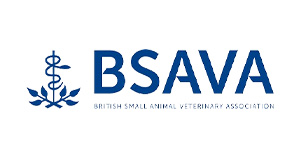Risks of Summer Ketosis
Published on: May 15, 2022
As we head into summer, we need to be aware of the risks of summer ketosis. In early lactation, particularly in grazed cows, there may be an energy gap if the energy required for milk production exceeds the energy available from the cows diet.
In the short term, cows can use body fat reserves to supply this energy gap. However, if intake is insufficient or if the cow has built up too much fatty reserve, the process can result in a build up of ketones in the blood, milk and urine.
If levels become extreme, this will lead to ketosis with cows suffering from poor appetite, depression, nervousness and general poor health. There will be a loss of milk production and potential fertility related diseases, which will have a significant cost.
So we need to get the balance right and be aware of the issues. From a feed perspective, our target is high fibre / low energy but far-off grazed dry cows have uncontrolled nutrition so how well is this being delivered? Too much or too little energy can cause problems.
Transition cows need sufficient time on closeup rations otherwise there will be disruption to intakes too close to calving and an increased risk of ketosis. I’m not sure if we’re in for a wet or dry summer but grass growth will currently compromise milk fever control if cows have access to good grazing – and milk fever will reduce their appetite in the crucial period after calving. And at this time of year, heat stress (from as low as 16C) can also cause reduced intake which will increase ketosis risk. Look out for cows seeking shade, bunching together or showing increased respiratory rates.
How will you know your herd is suffering with ketosis? We can ketone test fresh cows, ideally 4-7 days after calving. You should also look at milk yields and milk quality – low yields or low milk proteins are usually a sign of low energy or low intakes from inadequate dry cow feeding. Monitor the body condition of your cows and incidence of disease – if they’re too fat, they’ll be at risk of ketosis and a fatty liver whilst LDAs, RFMs, milk fever and metritis should all trigger questions and investigation.
Our aim is to help you keep every cow as healthy and productive as possible at this crucial lactation stage. There are various things we can do to help target this issue – as well as ensuring adequate feed and nutritional intake, Kexxtone Bolus works well as a prevention for SOFT (sick, old, fat, twins) cows whilst cows with problems after calving will benefit from Cholivite Bolus to improve their liver function and immunity as well as boosting their intakes. Ketotic cows will benefit from Keto-Fix and oral fluids are also beneficial as pumping cows with ketosis can prevent LDAs.
As always, knowledge is power so we want to work with you to identify and address herd risk factors. We are planning on holding a meeting to look at how different farms manage their transition cows order to share best practice. More details coming soon.

Author
Paddy Gordon
Learn how to prevent ketosis in dairy cows and ensure optimal health and productivity during the critical transition period. Discover the causes, symptoms, and effective management strategies to minimize the risk of this metabolic disease.
#Ketosis #DairyCows #TransitionPeriod #Nutrition #MilkProduction #AnimalHealth #FarmManagement #Veterinary #DiseasePrevention











